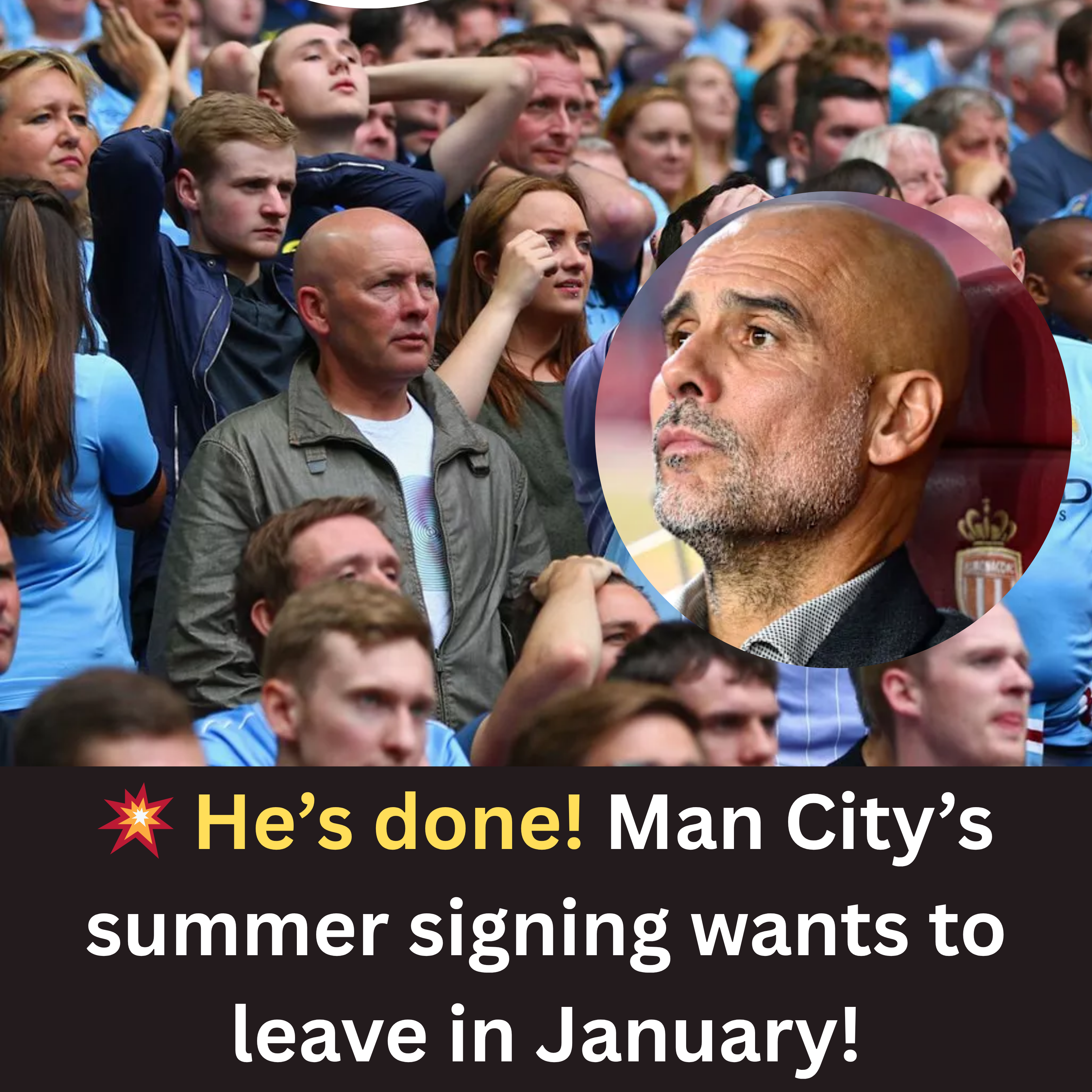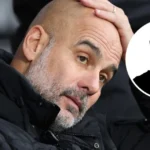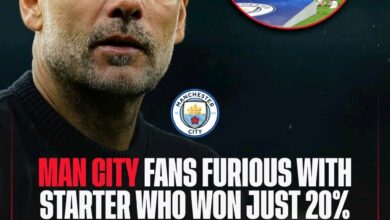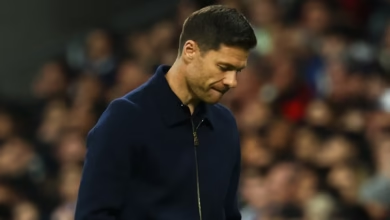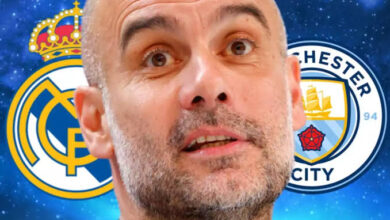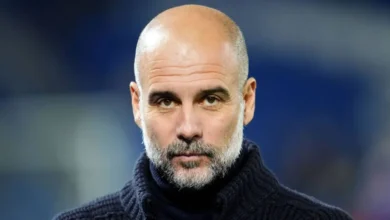Fabrizio Romano now provides update on Manchester City’s interest in long-term Newcastle United target
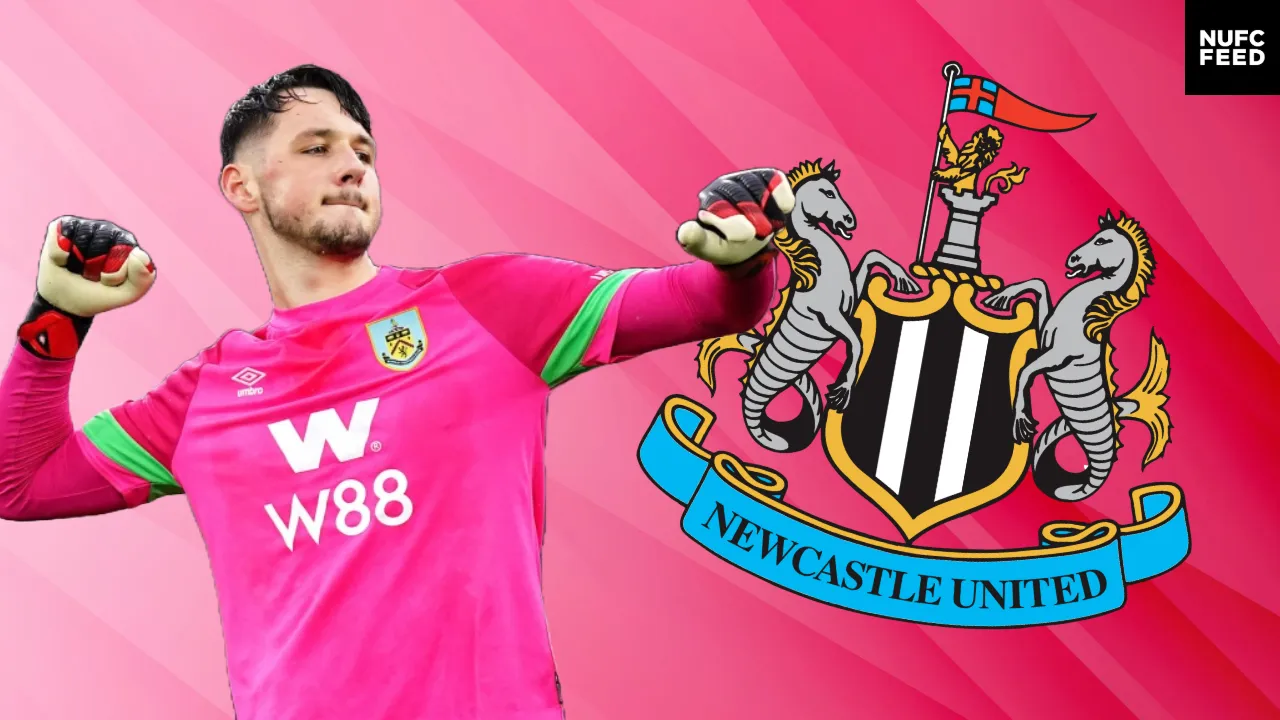
The summer transfer window has delivered yet another compelling narrative in the form of a three-way tussle for one of England’s most promising young goalkeepers. James Trafford, the 22-year-old shot-stopper who played a pivotal role in Burnley’s remarkable return to the Premier League, has become the center of an increasingly complex transfer saga that involves his current club Burnley, suitors Newcastle United, and his former employers Manchester City.
The Genesis of Newcastle’s Interest
The roots of this transfer saga stretch back over twelve months, when Newcastle United first identified James Trafford as their primary target to bolster their goalkeeping department. The Magpies, under Eddie Howe’s stewardship, have been methodically building a squad capable of competing at the highest levels of English and European football following their transformative takeover by Saudi Arabia’s Public Investment Fund.
Last summer, Newcastle appeared poised to secure Trafford’s signature in what seemed like a straightforward £20 million deal. The young goalkeeper, who had already established himself as one of the Championship’s most reliable custodians, was reportedly eager to make the move to St. James’ Park. The prospect of regular Premier League football, combined with Newcastle’s ambitious project and the opportunity to work under a manager renowned for developing young talent, made the move an attractive proposition for the England international.
However, negotiations between the clubs ultimately broke down, leaving both Newcastle and Trafford frustrated as the summer window closed without a resolution. The failed transfer represented more than just a missed opportunity; it was a setback for Newcastle’s long-term planning and left them scrambling to address their goalkeeping situation through alternative means.
Burnley’s Promotion and Trafford’s Stellar Campaign
The collapse of the Newcastle deal proved to be a blessing in disguise for Burnley, though few could have predicted the extraordinary season that lay ahead. Under the guidance of Vincent Kompany, Burnley embarked on one of the most dominant Championship campaigns in recent memory, securing automatic promotion back to the Premier League with a brand of football that caught the attention of neutrals across the country.
Central to Burnley’s success was the exceptional form of James Trafford between the posts. The young goalkeeper’s performances throughout the campaign were nothing short of spectacular, combining shot-stopping ability with excellent distribution and commanding presence in his penalty area. His consistency and maturity belied his years, earning widespread recognition from pundits, fellow professionals, and England manager Gareth Southgate.
Trafford’s statistical output during the campaign was remarkable. He recorded the highest save percentage in the Championship, made numerous crucial interventions in high-pressure situations, and demonstrated the kind of leadership qualities that suggested he was ready for the step up to Premier League football. His performances in the latter stages of the season, when promotion was secured, showed a player who thrives under pressure and possesses the mental fortitude required for top-level football.
The goalkeeper’s outstanding campaign didn’t go unnoticed at international level either. His consistent club form earned him recognition in England youth setups and positioned him as a genuine contender for senior international honors. This elevated profile naturally increased his market value and attracted attention from clubs across Europe.
The Financial Implications of Success
Burnley’s promotion to the Premier League, coupled with Trafford’s individual brilliance, fundamentally altered the dynamics of any potential transfer. The Clarets, now armed with the financial benefits of top-flight football and the knowledge that they possessed one of the division’s most coveted young talents, were in a position to significantly increase their valuation.
Reports suggest that Burnley have doubled their original asking price from £20 million to £40 million, a figure that reflects both Trafford’s improved status and the club’s stronger negotiating position. This dramatic increase represents more than simple inflation; it acknowledges the goalkeeper’s proven ability at Championship level and his potential to excel in the Premier League.
For Burnley, retaining Trafford would be ideal as they prepare for their return to the top flight. A goalkeeper of his quality and familiarity with the club’s systems would provide invaluable stability during what is traditionally a challenging period of adjustment. However, the financial realities of football mean that a £40 million offer for any player, particularly a goalkeeper, represents a significant windfall that could fund multiple signings and strengthen the squad across several positions.
The increased valuation also reflects broader market trends in goalkeeper transfers. The position has become increasingly valued in modern football, with clubs recognizing the importance of reliable shot-stoppers in achieving success. Recent transfers of goalkeepers have commanded substantial fees, setting precedents that clubs like Burnley are now leveraging in their negotiations.
Manchester City’s Strategic Interest
The emergence of Manchester City as serious contenders for Trafford’s signature has added another layer of complexity to an already intricate situation. City’s interest stems from potential departures in their goalkeeping department, with Ederson reportedly the subject of interest from Turkish giants Galatasaray and Stefan Ortega’s future also uncertain.
Manchester City’s involvement is particularly significant due to their possession of a buy-back clause in Trafford’s contract, a vestige of his earlier move from the Etihad Stadium to Burnley. This clause, reportedly set at £40 million, gives City a significant advantage in negotiations as it theoretically allows them to bypass competitive bidding and secure the player’s return.
However, according to transfer specialist Fabrizio Romano, City are not simply planning to activate the clause at its full value. Instead, they are seeking to negotiate a lower fee with Burnley, a strategy that could backfire by allowing other clubs to remain competitive in the bidding process. This approach suggests that while City value Trafford, they are not prepared to pay premium prices without exploring more cost-effective alternatives.
The timing of City’s interest is particularly intriguing given their track record with young players. Under Pep Guardiola, the club has demonstrated both a willingness to invest in promising talent and a tendency to loan players out for development. Trafford’s situation could represent either a genuine opportunity for immediate first-team football or another development pathway that might not align with his career aspirations.
The Ederson Factor
Central to Manchester City’s goalkeeper situation is the uncertain future of Ederson, their Brazilian number one. The 30-year-old has been linked with a move to Galatasaray, a transfer that would create an immediate opening in City’s squad and potentially accelerate their pursuit of Trafford.
Ederson’s potential departure would represent more than just a personnel change for City; it would signal a shift in their goalkeeping philosophy. The Brazilian’s unique skill set, particularly his exceptional distribution and ability to act as an additional outfield player in possession, has been integral to Guardiola’s tactical approach. Any replacement would need to offer similar technical qualities while also providing the shot-stopping reliability that modern football demands.
For Trafford, Ederson’s potential exit could present an unprecedented opportunity. At 22, he would have the chance to establish himself as the number one goalkeeper at one of the world’s premier clubs, gaining experience in the Champions League and competing for major honors. However, the pressure associated with such a role, particularly at a club with City’s expectations, could equally be seen as premature for a player still establishing himself at the highest level.
The Brazilian’s situation also affects the broader transfer market, as his availability could trigger a chain reaction of goalkeeper moves across Europe’s top leagues. This domino effect could ultimately benefit Newcastle if it forces City to look elsewhere or creates alternative options for the Magpies to pursue.
Newcastle’s Persistent Pursuit
Despite the complications introduced by Manchester City’s interest and Burnley’s increased valuation, Newcastle United remain committed to securing Trafford’s signature. The club’s persistence in pursuing the goalkeeper demonstrates their belief in his potential and their recognition of his importance to their long-term plans.
Newcastle’s approach to the transfer market under their current ownership has been notably strategic, focusing on players who can contribute immediately while also offering potential for future development and resale value. Trafford fits this profile perfectly, combining proven performance with significant upside potential and the likelihood of retaining or increasing his market value over time.
The Magpies’ interest in Trafford also reflects their broader squad-building philosophy under Eddie Howe. The manager has consistently emphasized the importance of character and mentality in his recruitment, seeking players who can handle the pressure and expectations that come with representing Newcastle United. Trafford’s performances in high-pressure situations throughout Burnley’s promotion campaign suggest he possesses these qualities.
From a tactical perspective, Trafford’s style appears well-suited to Newcastle’s approach. His distribution skills would complement their preference for building play from the back, while his shot-stopping ability would provide the reliability needed to support their defensive structure. The goalkeeper’s age also aligns with Newcastle’s strategy of building a core group of players who can grow together and form the foundation of the club’s future success.
The Player’s Perspective
Throughout this complex transfer saga, James Trafford’s own preferences and aspirations remain a crucial factor. Reports consistently suggest that the goalkeeper remains keen on the Newcastle move, a preference that dates back to the failed negotiations of the previous summer. This sustained interest indicates that Trafford sees St. James’ Park as the ideal next step in his career development.
The goalkeeper’s apparent preference for Newcastle over a potential return to Manchester City is particularly noteworthy. While City can offer Champions League football and the prestige of working with Pep Guardiola, Trafford may view Newcastle as providing a more certain pathway to regular first-team football and the opportunity to be a key figure in an ambitious project.
Trafford’s situation also highlights the modern player’s approach to career planning. At 22, he has the luxury of time to make strategic decisions about his development, and the choice between immediate glory at City and the promise of growth at Newcastle represents a fascinating career crossroads. His decision could set the tone for the remainder of his career and influence how other young players approach similar situations.
The goalkeeper’s international ambitions also factor into his decision-making process. Regular Premier League football at either Newcastle or a return to City following Ederson’s departure would enhance his chances of establishing himself in the England setup. However, the guarantee of playing time may be more secure at Newcastle, making it the more attractive option from an international perspective.
Financial Dynamics and Market Reality
The financial aspects of this transfer saga reflect broader trends in the modern football market, where player values continue to escalate and clubs must navigate increasingly complex negotiations. Burnley’s decision to double their asking price demonstrates how quickly market conditions can change and how promotion or relegation can dramatically alter negotiating positions.
For Newcastle, the increased valuation represents a significant challenge to their transfer strategy. While the club possesses substantial financial resources, they must also comply with Financial Fair Play regulations and demonstrate responsible spending. A £40 million outlay for a goalkeeper, while not unprecedented, would represent a substantial commitment that would impact their ability to strengthen other areas of the squad.
Manchester City’s approach to the buy-back clause negotiations reveals their own financial considerations. Despite their considerable resources, the club’s willingness to negotiate below the clause value suggests they view £40 million as excessive for a goalkeeper with limited Premier League experience. This stance could provide Newcastle with an opportunity if City’s negotiations with Burnley prove unsuccessful.
The broader goalkeeper market also influences this situation. Recent high-profile transfers have established new benchmarks for fees, but they have also highlighted the risks associated with expensive goalkeeper signings. Clubs are increasingly conscious of the need to balance potential with proven performance when making significant investments in the position.
Implications for All Parties
The resolution of the James Trafford transfer saga will have significant implications for all parties involved. For Newcastle, securing their long-term target would represent a statement of intent and provide stability in a crucial position. Failure to complete the deal, particularly after such sustained pursuit, could be seen as a setback in their squad-building efforts and might force them to pursue less preferable alternatives.
Burnley face their own complex decision-making process. Retaining Trafford would boost their Premier League survival prospects and demonstrate their ambition to establish themselves in the top flight. However, the financial benefits of a £40 million sale could provide the foundation for a comprehensive squad overhaul that might ultimately prove more beneficial to their long-term prospects.
Manchester City’s involvement adds another dimension to their goalkeeper situation. Successfully re-acquiring Trafford would provide them with a long-term solution to their potential Ederson problem while also representing a profitable piece of business given their initial investment in the player. However, failure to secure his return might force them to look elsewhere in a limited market for top-quality goalkeepers.
The Broader Context of Modern Football
The Trafford transfer saga exemplifies several key trends in contemporary football. The increasing importance of goalkeeper quality, the rising transfer fees across all positions, and the complex web of buy-back clauses and sell-on fees that characterize modern player trading are all evident in this situation.
The case also highlights how promotion and relegation can dramatically alter transfer dynamics within a single season. Burnley’s return to the Premier League has transformed them from a selling club operating under financial constraints to one capable of demanding premium prices for their assets. This transformation demonstrates the continued importance of league status in determining clubs’ market positions.
Furthermore, the involvement of three clubs with different profiles and objectives illustrates the diverse approaches to squad building in modern football. Newcastle’s long-term project, Manchester City’s pursuit of continued dominance, and Burnley’s survival-focused strategy all influence their approach to this transfer and reflect the varied motivations that drive the transfer market.
Looking Toward Resolution
As the transfer window progresses, the resolution of the James Trafford situation appears increasingly urgent for all parties. Newcastle’s need for goalkeeping reinforcement, Manchester City’s potential requirement for Ederson’s replacement, and Burnley’s desire to maximize their return on a valuable asset all contribute to the mounting pressure for a resolution.
The outcome of this saga will likely depend on a combination of factors including the final fee agreed, the player’s personal preference, and the timing of other transfers in the goalkeeper market. Trafford’s own decision will ultimately prove crucial, as his preference could override purely financial considerations and determine the final destination.
Regardless of the eventual outcome, the James Trafford transfer saga has provided a fascinating insight into the complexities of modern football transfers. It demonstrates how multiple factors including performance, market conditions, contractual obligations, and personal preferences combine to create intricate negotiations that can captivate fans and influence clubs’ fortunes for years to come.
The resolution of this situation will mark not just the end of a complex transfer saga, but potentially the beginning of the next chapter in the careers of all involved parties. For James Trafford, it represents the opportunity to establish himself as a Premier League goalkeeper and continue his development toward international recognition. For the clubs involved, it will influence their prospects for the upcoming season and their long-term strategic planning.
As negotiations continue and deadlines approach, the football world watches with interest to see how this compelling transfer story reaches its conclusion. The outcome will undoubtedly have ramifications that extend far beyond the immediate transfer fee, influencing careers, club strategies, and potentially setting new precedents in the ever-evolving landscape of football transfers.

